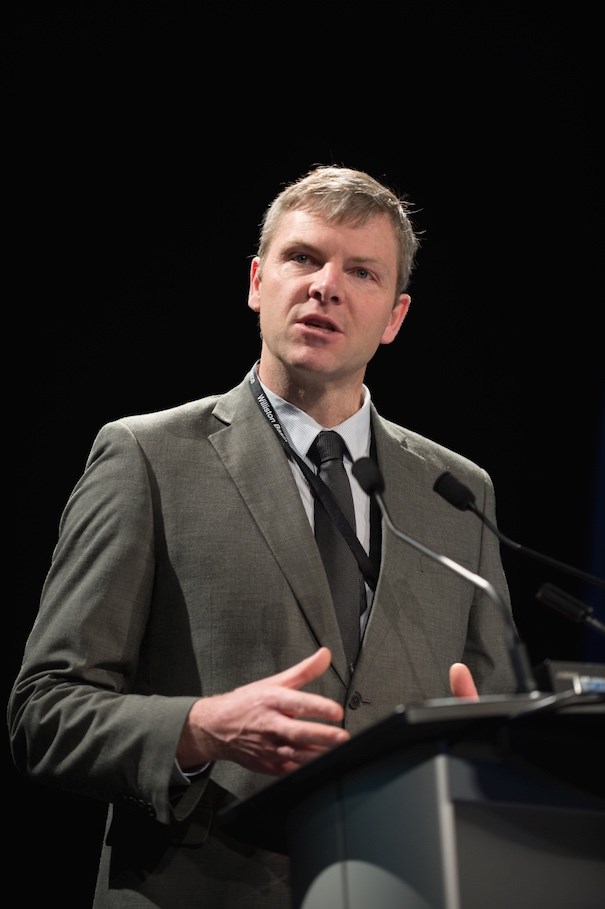Rising government costs, the burden of inefficient regulations, and the lack of infrastructure to move Canadian energy to growing markets are all undermining investor confidence in Canada and negatively affecting the country’s ability to attract the capital needed to create jobs and national prosperity,. That’s according to A Global Vision for Canadian Oil and Natural Gas, the first in a series of economic reports to be released by the Canadian Association of Petroleum Producers (CAPP) in 2018.
“Canada is falling behind other countries in attracting oil and natural gas investment to create job and national prosperity for Canadians,” said Tim McMillan, president and CEO of CAPP, in a press release on Feb. 26.
“We want to see governments at all levels take real steps to attract investment, create jobs and build prosperity across the country.
“Across Canada, government costs and regulatory barriers are on the rise – making it harder to grow our industry and create and support jobs for Canadians.”
He went on, “Energy jobs and investment will leave Canada for other countries unless there are changes to encourage growth the industry can build on.”
Around the world capital investment in the oil and natural gas sector increased globally in 2017, but was down in Canada, CAPP said. Total capital spending on Canadian oil and natural gas was $45 billion in 2017, down 19 per cent from 2016 and 46 per cent from 2014. In comparison, capital spending on oil and natural gas in the United States last year increased by 38 per cent to $120 billion.
“Today Canada’s No. 1 energy customer – the U.S. – has become our No. 1 energy competitor.”
“If we do not export Canadian energy, we will just be exporting Canadian jobs. In Canada we need pipelines – not barricades – to supply the world with more Canadian energy.”
“We operate in one of the world’s most stringent regulatory environments. It’s important that we have a robust regulatory framework that meets environmental goals, but not one that creates additional costs, delays and inefficiencies.”
“The world wants more Canadian energy, now and for the future. In an international survey of citizens from more than 30 countries, Canada was ranked No. 1 as the global supplier of choice for energy,” McMillan said.
CAPP said capital investment in Canada’s energy sector generates economic activity across the country, spurring job creation and growth for all levels of government – including about $19 billion in annual government revenues in 2015 and 533,000 jobs across the nation in 2017.
The International Energy Agency (IEA) forecasts that although renewable energy is on the rise, oil and natural gas will continue to make up the largest part of the total energy mix with increased urbanization and population growth, accounting for 52 per cent of the total energy demand by 2040.
This analysis has led CAPP to call on the federal government to establish a four-part vision for the oil and natural gas sector that creates jobs for Canadians and national prosperity.
Firstly, CAPP says global connection for Canada’s oil and natural gas resources is essential.
Secondly, globally competitive policies that increase the country’s ability to attract capital are needed to create jobs and national prosperity.
Thirdly, any climate plan must be comparable to other jurisdictions competing for the same global capital.
Finally, government policies must spur and accelerate innovation and technology in the oil and natural gas sector.
CAPP noted that in 2014, Canada generated two per cent of the world's total GHGs, while the United States contributed 14 per cent, making it the world’s second largest emitter.
Since Canada’s Oil Sands Innovation Alliance (COSIA) was launched in 2012, its oil sands members have investment almost $1.33 billion to develop 936 distinct technologies to improve tailings management and reduce impacts on air, land and water.
At present, our four million barrel-per-day (bpd) pipeline network is full and will continue to see increased constraints by 2030 when Canadian oil supply is expected to grow to 5.4 million bpd.
At one time there were more than 20 liquefied natural gas export projects proposed in British Columbia. To date, only one small-scale project has come to fruition.
Canada imports 600,000 bpd to Eastern Canada from the U.S., Africa and the Middle East. Another 2.4 billion cubic feet per day of natural gas is imported to Eastern Canada.




